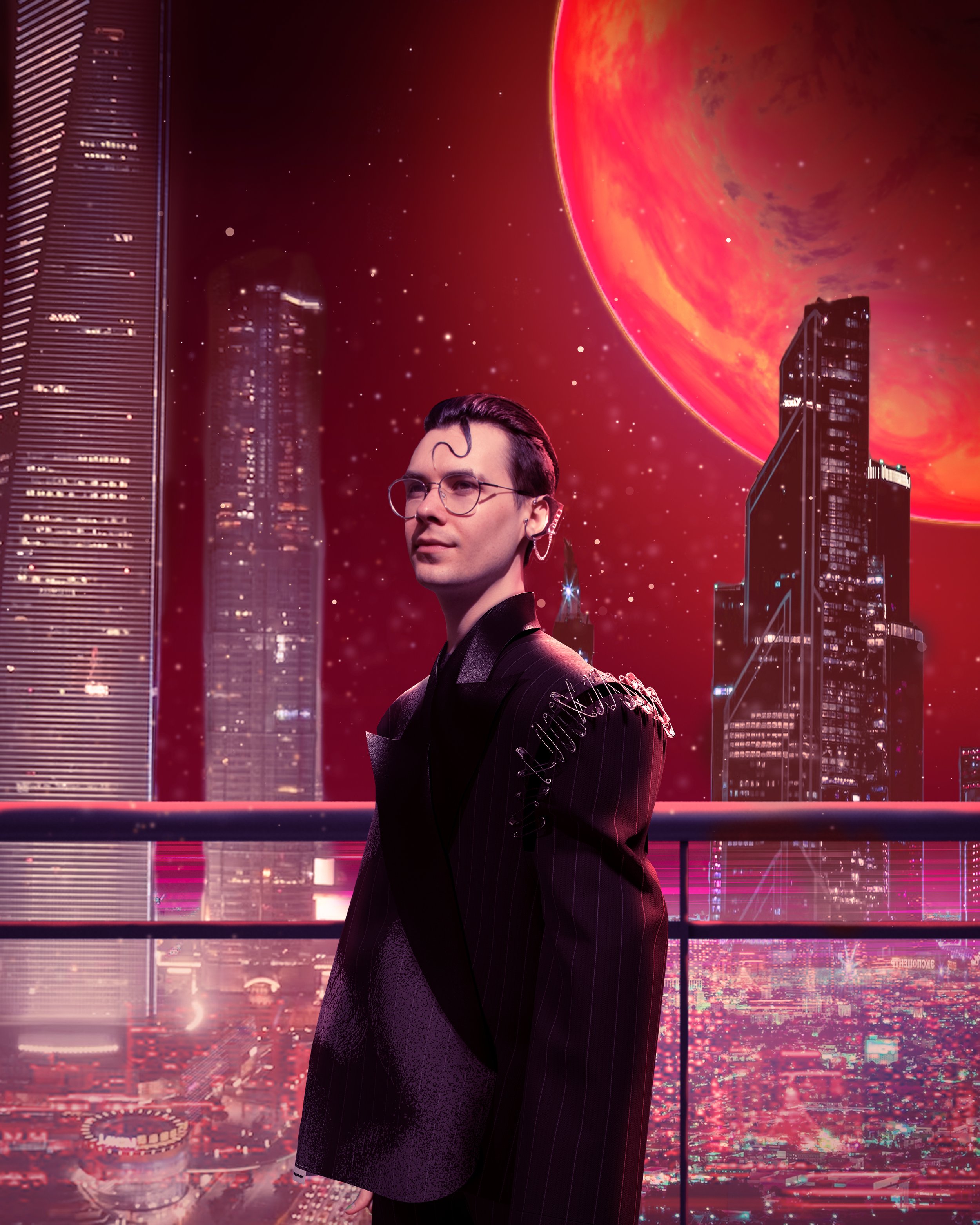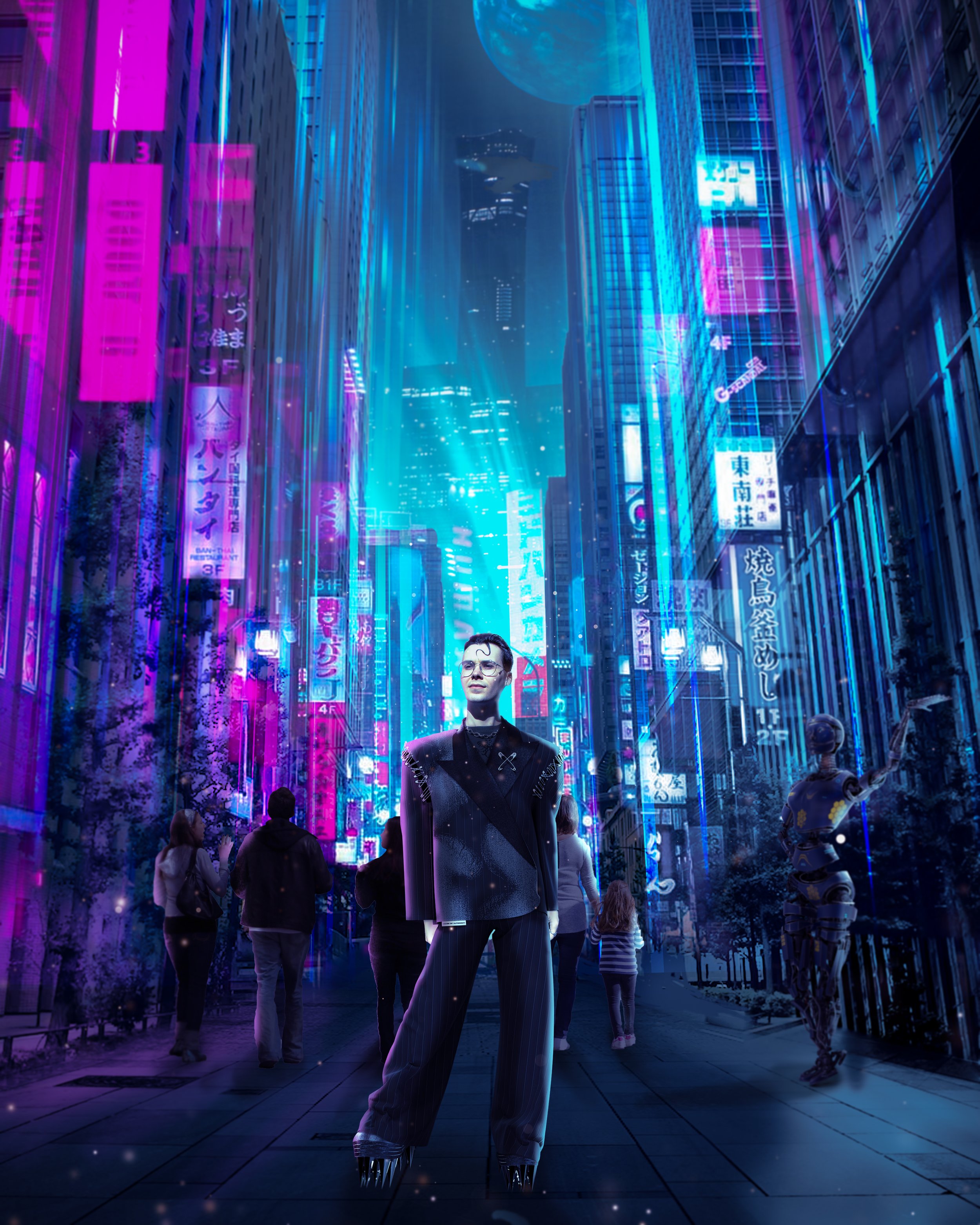


IMAGINING A QUEER DIGITAL FUTURE
April 2023
JEUJE spoke to Joseph Boys-Smith – a queer, independent artist designing digital menswear pieces for his own label, House of Autonomy, about what makes digital fashion so special and why it’s important that the queer community isn’t too quick to turn its back on the Metaverse.
In 2023, there are few of life's daily tasks that have remained unchanged by the reaches of the internet. A tool that emerged into the mainstream under 50 years ago has rapidly become a vital part of the lives of over half of the planet’s population, used for everything from socialising to education to finances – for most of us, it is difficult to imagine a life without connection. But, in an industry that changes shape as fast as tech, this has fast become old news, and many are clawing to get ahead of the curve and be among the first to figure out what will be the next technological innovation to take up shop in our lives.
When it comes to fashion, many are placing their bets on a kind of Metaverse. A separate virtual landscape, running parallel to our physical lives, where people can create a virtual life with digital art, homes, fashion and even digital currency, without real-world restrictions. Fashion brands, big and small, all over the world have begun to dip their virtual toes into digital fashion design, from heritage houses all the way to independent creatives; it seems that digital life is on everybody’s radar.
One of these brands that has emerged from this tech development is House of Autonomy, a digital menswear brand by Joseph Boys-Smith – an up-and-coming artist based in London, who hopes to dress a future digital community in his queer, punk-inspired designs.
Despite the increasing buzz in both the fashion and tech worlds, Joe explained that this idea of having a separate persona in a virtual world is not exactly a new one – in fact, it has been a long time coming. Even if you didn’t notice it, if you grew up with an internet connection, some of your first experiences with fashion are likely to have been digital.
Within the queer community in particular, the story of an isolated childhood in a community that doesn’t understand or appreciate those who are different is, sadly, a common one. Finding people to relate to and who appreciate what makes you different isn’t always easy when you’ve grown up in a small town or in the country, but the introduction of the internet and video games, for a lot of people, allowed for an opportunity to take on a new persona and explore new possibilities without the judgement.
For Joe, this was the beginning of a lifelong love for digital dressing: “Especially as a queer teenager, my only real access to fashion was through escapism. Through these video games. Because, apart from my friendship group in school, I didn’t really have anyone that was similar to me until uni. That’s why I always sought comfort in video games, being able to dress however I wanted to in an environment where it's not a big deal… Specifically, it was always CoD or GTA. I used to make all my characters female and they always had to have really bitchy vibes.”
Until the first lockdown, however, this escapist trend of turning avatars into the most outrageous and cunty characters imaginable was an unspoken one, mostly reserved for those with a love for gaming. But all that time indoors lead to a boom of digital collections from all kinds of designers, igniting a long-awaited flame in the fashion world – and in Joe’s heart: “In the first lockdown, I saw Marine Serre’s first digital collection and I thought… I would love to do something like that. It was this intersection between my love for physical fashion and the escapism of video games.”
Describing his brand as a “middle finger to any kind of conformity,” it is clear that a sense of digital rebellion has followed Joe through life, from his childhood experience of expressing himself through video game avatars, all the way to today, deconstructing social norms about what men should wear through deconstructed, digital fashion design.
As a result of this digital fashion boom, it is clear that there is an ever-growing acceptance of digital art and design as valued creative pursuits. A survey conducted last year on 1000 young, Gen-Z people by Parsons University in collaboration with the online platform, Roblox discovered more and more people are investing in virtual designs every day, with nearly three-quarters of respondents saying that they would spend money on digital assets.
But it hasn’t all been good press. There is still much scepticism around this virtual development – and not without reason. NFTs in particular, which started out as a way for digital artists like Joe to monetise their work through an imposed scarcity, have garnered a bad reputation for being a breeding ground for scams, Ponzi schemes and market manipulation, with influencers as big as Kim Kardashian being accused of “pumping and dumping” – shilling worthless investments to their followers and running off with the AD paycheck.
So, is it worth it? Should we be investing in a digital wardrobe or should we be shying away from a market that is too unpredictable and unmoderated?
For Joe, the answer to the question depends on your reason for buying these digital artworks: “I don’t necessarily agree with all this use of NFTs at the moment. I don’t even know if I want to situate in an NFT environment. I love how when it was first invented it was a way for artists to make money from their art. Now it just turned into businessmen making sketchy moves… loads of the people I hear talking about NFTs will be people who are interested in them for the wrong reasons.”
Joe’s response unwittingly opened what can only be described as a can of worms in my brain. What are the reasons for buying digital assets like NFTs?
Well. There are only really two.
Reason number one: you want to make some money – maybe you’ve seen an NFT advertised online and you believe the value will increase, therefore providing an opportunity to make a quick buck. Maybe not the greatest plan.
Despite all the hype around NFTs, the celebrity endorsements and the promises that if you invest at the ‘right time’ you can make some quick cash, there are few NFTs that have truly turned out to be worthwhile investments. Remember those Bored Ape NFTs that every celebrity under the sun seemed to own last year? Their value has now deteriorated by almost 80% and the majority of the celebrities who spent so much of their time trying to flog them have seemingly completely forgotten about their existence. Only do this if you understand the risk or have money to lose.
The second reason, though, is that you love the piece, and you enjoy it enough that you’re happy to pay the price to own the original. Maybe a designer you love has made a digital collection that you know will have your digital self serving a magnitude of cunt. Maybe you’ve seen a digital artwork that is just living rent-free in your brain: all good reasons to make a purchase.
So, buy in if you’re there for the right reasons. Because you enjoy the art and want to support the artist. Because if you ignore the digital scene purely because of the reputation built by those who don't care, you will miss out on some incredible artists of the future.
If Zuckerberg is right and we are on the precipice of a digital revolution or a Metaverse, then it is important that queer or any other minority communities stay involved. “I think it is really important that we stay visible,” Joe told me, “if we're designing the Metaverse, firstly, who is designing that, and are there going to be any biases? Is the Metaverse going to be as diverse as it should be if the only people willing to get into it are straight, white men? That is a concern that I feel needs to be addressed… I think for me it links back to the fact that there are going to be thousands of other kids like me that are restricted by geography. Feeling like they’re not respected or understood by people around them. They will probably also be seeking that sense of escapism. So it’s a bit like I’m doing it for me, in a way.”
So that’s it. Don't let a movement that has the potential to launch the careers of thousands of talented creatives and open up a new world of possibilities be hijacked by scammers and money grabbers. Let's stay visible, support artists and build an accessible world where everybody is welcome.
Digital fashion: @houseofautonomy
Model: @jxebs_
Digital Art: @camz_artt
Photography & Creative Direction: @planetlilyy